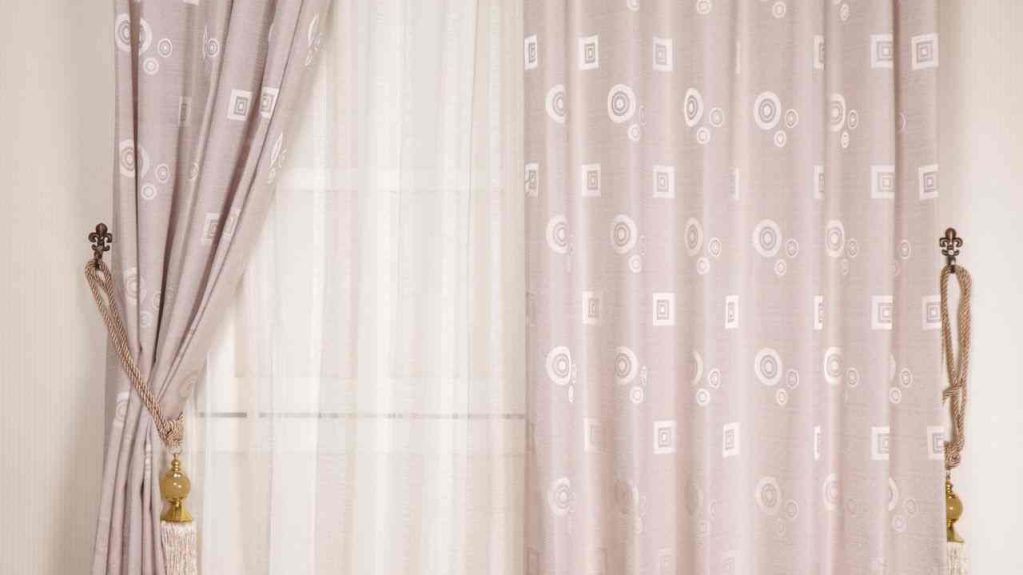Curtains that provide enough insulation and enhance the beauty of a room can significantly save heating and cooling costs. The best energy-saving curtains have a triple weave that blocks light and sound while retaining heat throughout the winter. A suitable set will not only be able to prevent heat loss by up to 25%. Furthermore, it will also be available in a variety of colors and designs that will look wonderful in your house.
What Are Energy Saving Curtains?
Insulated curtains or thermal curtains are other names for energy-saving curtains. They’re thick and hefty, with an insulating layer of acrylic foam. This insulation will keep warm air inside and cold air outside.
What is the Difference Between Energy Saving And Thermal Curtains
Energy-efficient curtains can prevent unwanted temperature changes in a room. Their multi-layer design reduces ambient noise and light, making them ideal for a good night’s sleep.
Thermal curtains don’t have to be your typical plastic-backed curtains. The assortment of designs, materials, and weaves give a multitude of alternatives to accent your décor. They save your heating and cooling costs while making your windows the center point of the space.
Typically, windows account for between 10 and 25 percent of a home’s total thermal energy loss. However, blackout curtains might lower your energy cost by up to 25 percent. Blackout curtains are energy-saving and help retain room warmth throughout the year’s colder months.
Do Energy-Saving Curtains Work
Yes! Thermal curtains are valid year-round without sacrificing comfort. By reflecting solar radiation, medium- to light-colored drapes with a white, thermally reflective backing may minimize heat input by as much as 33 percent in the summer. A further factor that impacts a window’s ability to retain heat is its orientation.
Who Makes Good Energy Saving Curtains
Nicetown has the best quality and efficiency in its energy-saving curtains.
Our best option combines the triple-weave technology of our cheap selection with the noise-canceling features of our choice. What does it amount to as a conclusion? The Nicetown total-blackout drapes effectively deaden ambient noise around the clock.
This set of energy-saving curtains has a double layer on each curtain panel, making it superior to other thermal insulated blackout curtain sets. The additional thickness improves the insulation and blocks the lighter.
Also, even if you leave your lights on, you won’t be able to make out any shadows outside; to test this, shine your phone’s flashlight straight on the curtain.
These excellent energy-saving curtains also insulate your home from the chilly winter air, thanks to their double-layer construction.
How To Make Your Energy-Efficient Curtains
- Thrift stores are a terrific place to get inexpensive thermal curtain stuffing (between $5 and $10), and old comforters are perfect for this use. Acquire a few of them. Using two comforters instead of one will make your room warmer and offer weight to hold your drapes taut to the wall.
- Take the appropriate measurements for your window.
- Cut a couple of inches of fabric more significantly than the window size.
- Following this, stitch the fabric together along three sides. Stop stitching about a third of the way from each corner on the last fourth side.
- Using the opening in the seam, you can flip the curtain right-side-out.
- You can hang the curtain from the floor by inserting a dowel or big pole between the bottom layer of cloth and the blanket.
- Finish the curtain off by mending the hole you made.
How To Hang Energy-Saving Curtains
- You can hang your new energy-saving curtains in several ways.
- You can turn the curtain from hooks attached to the window frame, or you can attach velcro to the top rear side and sew little fabric loops on top. Just try something new.
- Installing energy-efficient curtains is a simple and low-cost approach to cutting down on heating and cooling bills. The majority of the components you can take from recycled goods.
How Do Energy Saving Curtains Work
Curtains may aid heat retention because they reduce air exchange between a room’s warm and cool zones. Heavy curtains provide a barrier that slows the passage of air from the main room to the window, which is effective even in rooms with double-paned windows.
White energy-saving curtains reflect sunlight throughout the summer, keeping rooms cooler. Sun zero energy-saving curtains with a white plastic backing may obscure the sun and perhaps lower the temperature in a room by as much as 33%. Tightly woven fabrics effectively block the transmission of light and heat. Light is a common heat source; tight weaves help retain body heat.
Conclusion:
Curtains with a high R-value retain warmth during the winter and block the sunlight during the summer. On bright winter days, open curtains to let the sun’s warmth in. As a result, your heating system can relax a little and provide more gentle comfort. At night, draw the drapes to retain heat.
To lessen the heat gained through the glass, especially in the west and south, shut the curtains throughout the day. These methods minimize energy use, which in turn decreases monthly electricity costs. Because of this, you experience less disruption to your comfort level, and you spend less money on utilities.


